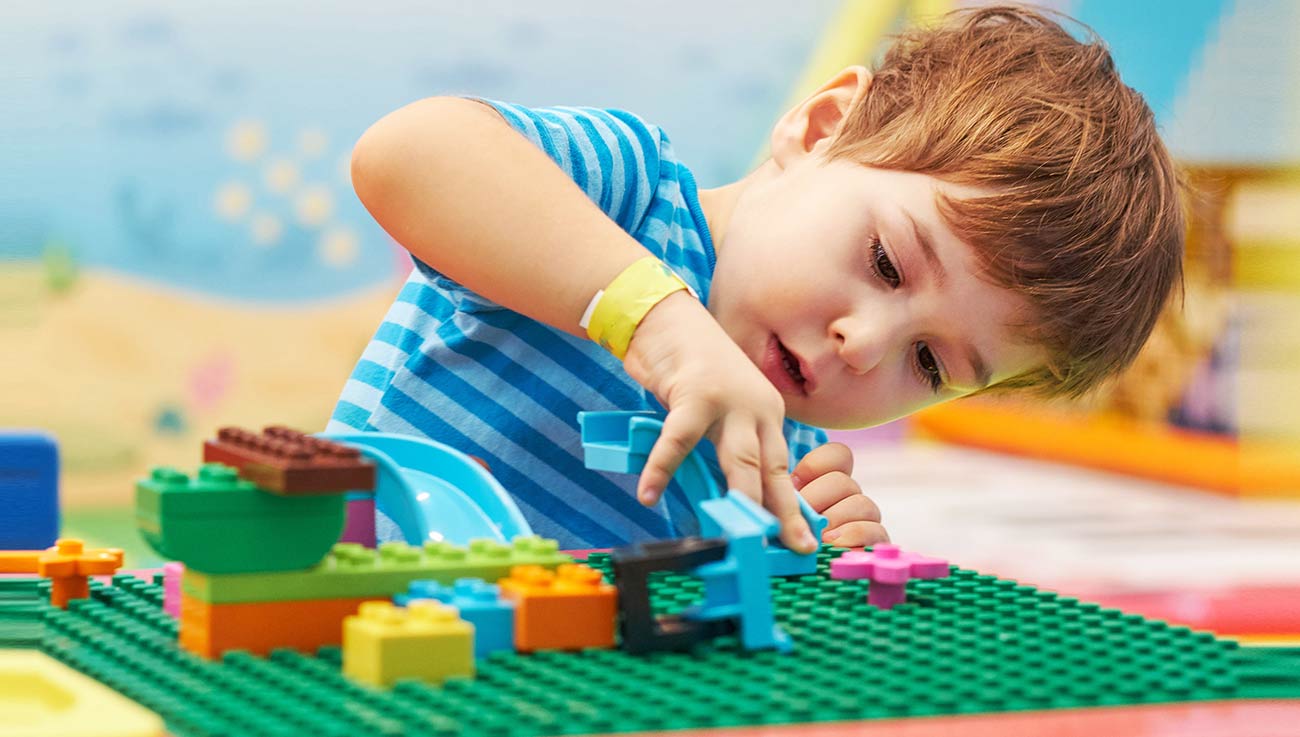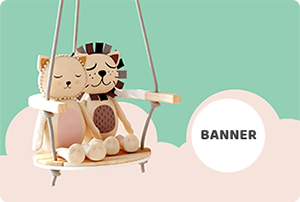
Importance of Play
Play is often talked about as if it were a relief from serious learning. But for children, play is serious learning. Play is really the work of childhood.”
Fred Rogers, aka Mr. Rogers
Play – the universal language of all children. The tool and means for children to learn and explore the real world.
As a Child Life Specialist who helps children cope in medical settings, I get to witness the extraordinary effect that play has on a child – whether the child is engaging in play as a distraction from a stressful or invasive procedure, playing as a way of normalizing the medical environment they are in or by engaging in medical play for the purpose of familiarizing themselves with medical tools – it is truly amazing .
As Pediatric Occupational Therapists, Christine and I also recognize play as being one of the primary occupations or meaningful daily activities for all children. Play builds confidence in children, fosters creativity and self-expression, and improves social skills, problem-solving skills, fine motor skills, gross motor skills as well as visual motor skills.
For parents or supportive adults like yourself, it is important to encourage opportunities for children to engage in free play, whether it is indoors or outdoors. This blog post will discuss the different types of play, how to play with children to enhance their motor and cognitive skills and ways to support children who may need assistance in engaging in play.
Types of Play
There are several types of play. Most of them are observed to occur at various developmental ages and stages. Some children, especially children with special needs, shy children, and/or children that do not have opportunities to play with other children, may need some support from caregivers to acquiring skills in and/or learn various types of play.
Here are some common types of play:
- Solitary play– this type of play is when children are playing with objects or toys by themselves, and do not seem to be observing or engaging in the environment around them during this play. Ex. Using a shape shifter.
- Onlooker Play – this is when a child is looking at other children playing without the desire to join them Ex a child watching children play on the playground while sitting on the bench
- Parallel play– This is when children are playing near each other, but seem to be doing their own thing, and are not engaged with each other. They may look at each other occasionally but they are not usually trying to influence their peers. Ex. One child is building a block tower at a table while another child is playing with a car on the same table.
- Associative play- This is usually when a child seems to be more interested in their peers and their play. Children are more engaged with each other, and there isn’t usually structure to their play. Ex. Two or more children are building their own block structures in the same area, sharing blocks.
- Imaginative play- Children are imagining worlds, roles, and situations, and encouraging other children to participate in their imaginary situation. Ex. One child is a veterinarian, another child has a sick stuffed animal pet.
- Cooperative play– When children work together for a common goal. Ex. Organized sports, playing board games together, building a sandcastle together.
Helping your child to get the most out of their toys:
Children may not always know how to play or engage with the toys that are given to them. Children that are young, have special needs, and/or have never seen that type of toy before may need an adult to show them how to use their toy to maximize their learning.
While some toys may seem to have limited uses, there are many ways to enhance your child’s learning by using any toy they are given. Here are some examples to do just that:
Language
Using a lot of language while playing any toy is essential in increasing your child’s vocabulary and receptive skills. Teach your child the names and various properties of the toys. For example, “this is a toy car. The colors on the car are red, black, and white. The car is small, feels hard and has a smooth surface; the paint is shiny”. It is also important to narrate your own actions as well as your child’s when playing with the toys. “I am rolling the car up a hill. Vroooom… beep beep goes the horn. I see you are stopping the car from getting across, I will drive around you”. The more language you use, the more you are encouraging your child to understand and/or use language during play.
Promoting Social Skills
Using any and all types of play is great to improve a child’s social skills. Set up situations where your child has to share, and/or ask for toys. Thank them if they let you use the toy. Drawing rainbows? After verbally going over the colors in a rainbow, hold onto the green and purple crayon, that way when they get to those colors in the rainbow, they have to ask you for the crayon.
Following Directions
Play can be a great way to teach your child how to follow one step, or multi-step directions. Whether it is during an organized game, or imaginative play. Start with giving simple, and clear one step directions, and gradually increase the complexity of the directions and number of steps. For example, while playing Simon Says, you can practice one step commands such as “touch your nose” or advance to multi-step directions such as “touch your nose then touch your ears”. While engaging with blocks, you can have your child place the red block on top of the green block to have them practice following directions.
Modeling
Since most children are visual learners, it is important to model or show your child how to perform any task you want them to perform with an object or toy. It is also important to note, that you should always try to model how to use new objects, perform new tasks, or play with new toys.
For example, when attempting to brush a doll’s hair, you pick up the doll, place it in front of you, grab the brush, and show your child how you hold the doll with one hand and brush the hair with the other, moving the brush from the top of the doll’s head to the tip of their hair. Then, give the doll and brush to your child and verbally encourage them to do the same. If needed, gently place your hands over or under your child’s hands and perform the action with them. Gradually reduce the amount of help you give them, until they can brush the doll’s hair on their own.
It is also helpful to use toys to model real life activities such as potty training, wearing a mask or going to school. When kids see their favorite toys engage in certain activities with them, it can increase compliance and reduce challenging behaviors associated with those activities.
Facilitate Self-Expression:
It is always great to use play as a means for children to express themselves and showcase any suppressed feelings. For example, after a stressful doctor’s visit, you can play ‘doctor’ with your child to see how he or she may have felt during the visit. When your child is observed to aggressively insert a toy needle into her doll’s arm, that can reflect how she perceived the needle she had gotten. This type of play allows parents an opportunity to address these feelings in a safe space. “Seems like that pinch doesn’t feel too good, but I also see how quick it was to go away!”. Similarly, pretending to play a scene from your child’s day at school or an encounter they had at their friend’s house can be a great way to practice safety, social skills and develop appropriate coping strategies when needed.
Physical Support
Depending on your child’s age and abilities, they may need some physical support when learning how to play with toys. They may need assistance in holding an item, manipulating it, putting it back, and playing with it. When giving physical support to your child, it is important to gradually diminish the amount of support you give them as they become increasingly more independent with the task. Some ways to provide this support is by placing your hand over or under your child’s hand while engaging and manipulating a toy, holding the item or toy for them, verbally reminding your child what to do next with the item, pointing to the object that they need and more.
Check out our ‘Toy Reviews’ tab on more ways to help foster your child’s acquisition of developmental skills with the toys you have at home or with some of our favorite toys that we have used during our therapy sessions. A new toy review will be released each month. Join the email listing to get it straight to your inbox.
And of course, always reach out with questions on specific ways to enhance various skills with your child’s favorite toys.



